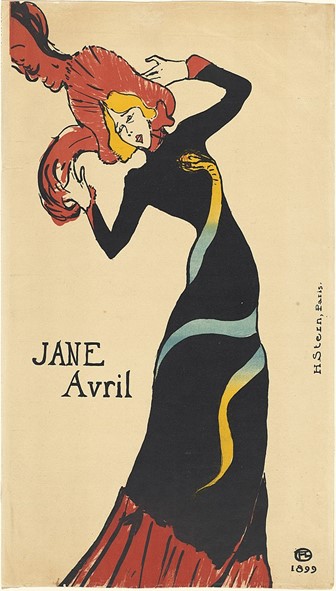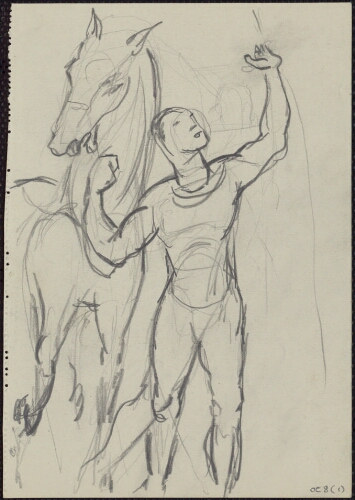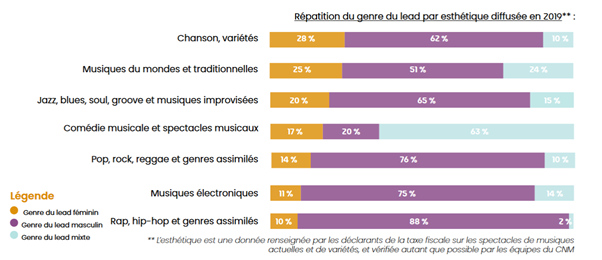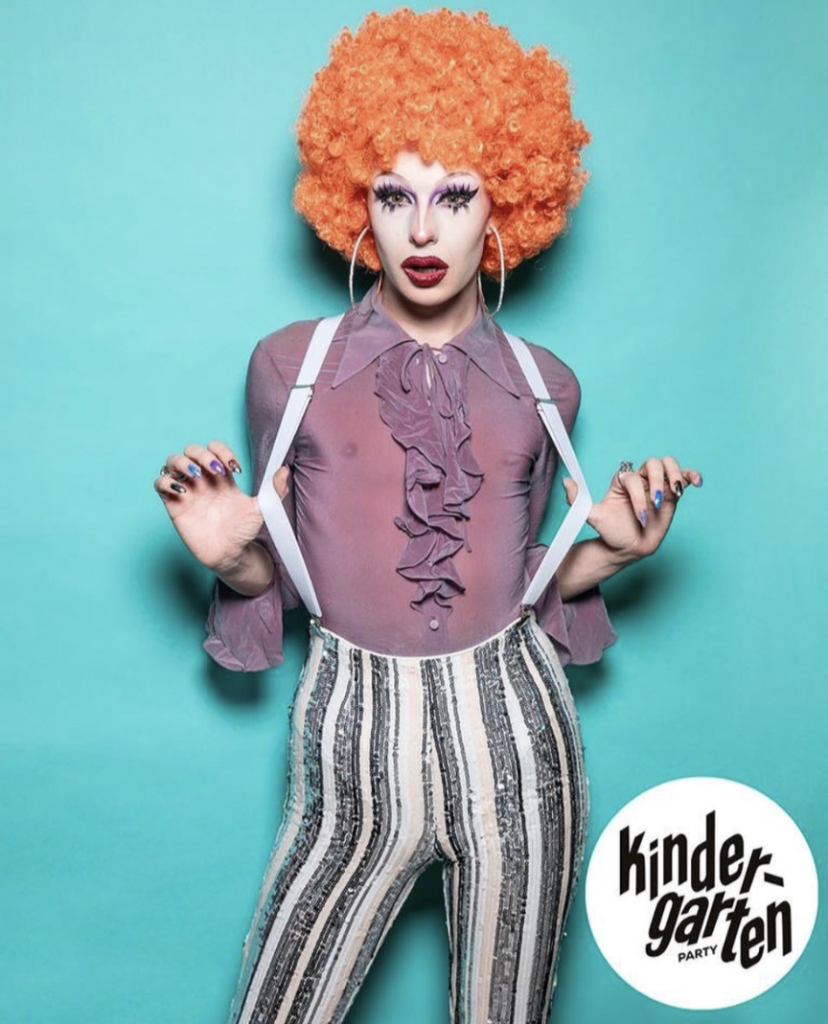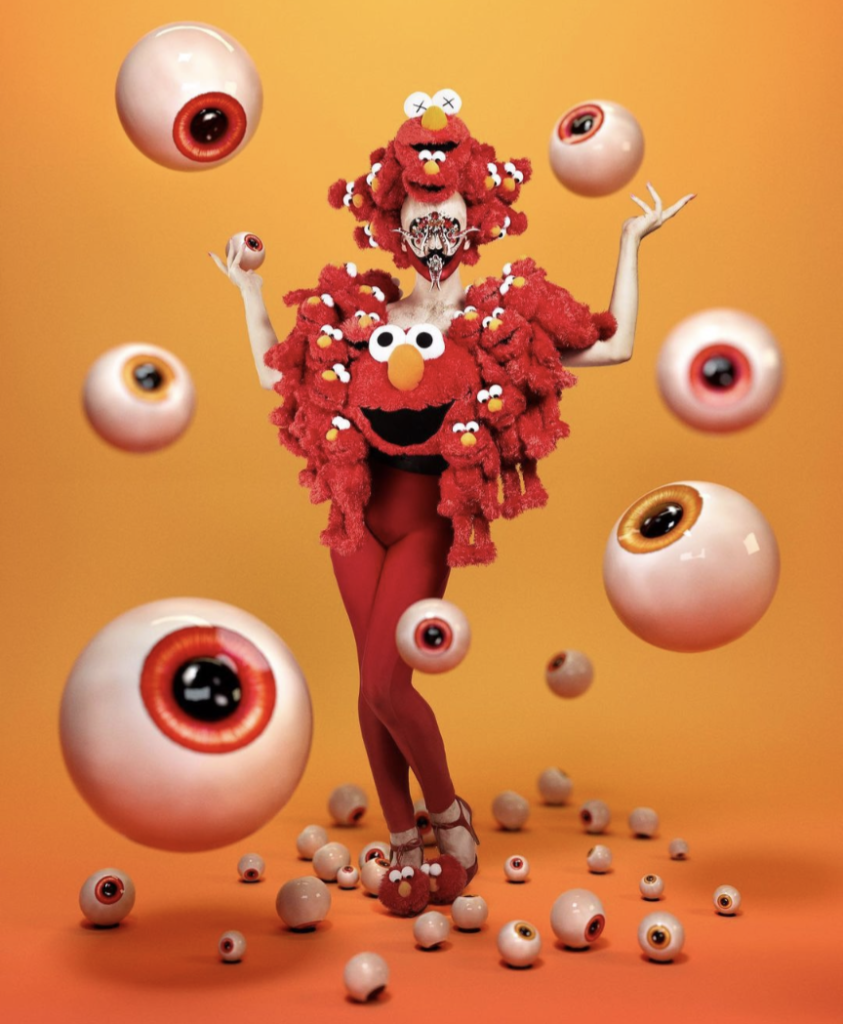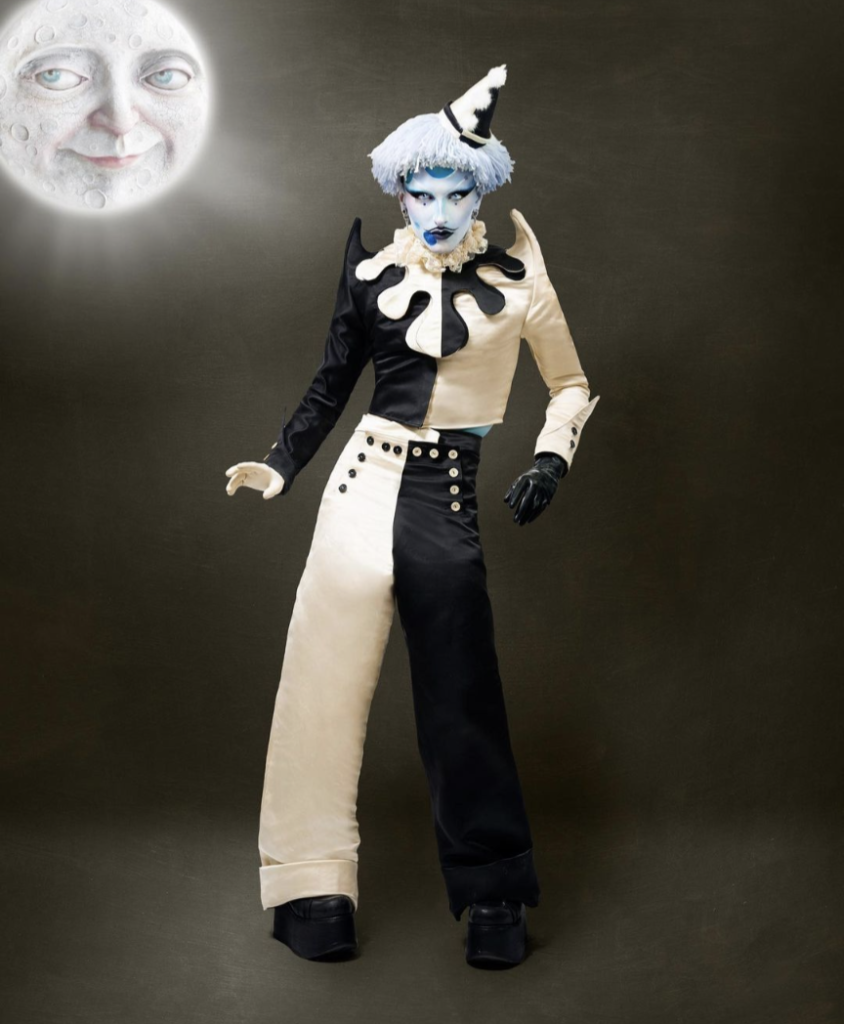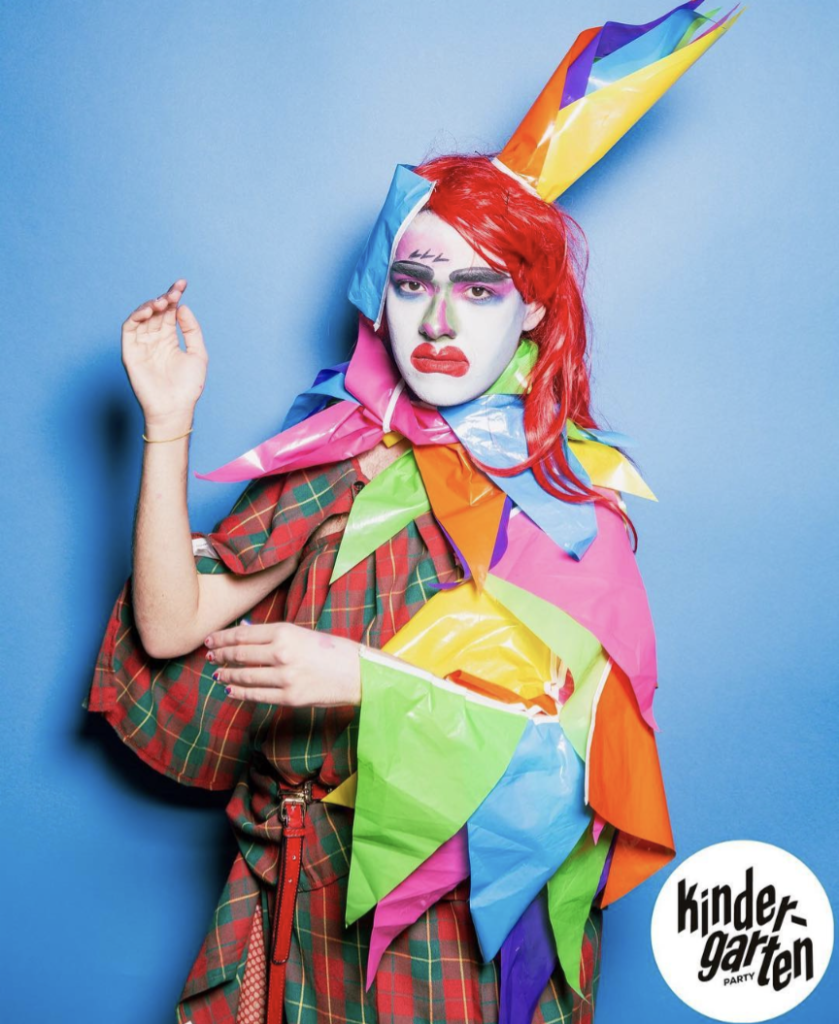Emma Janssens, Lilas Brangeon and Delphine Guerin
The expression “Punk” is linked to the music that appeared in the 70s in the United Kingdom. This word has a strongly sexual connotation in this language. Then it has evolved to mean “worthless”, “good for nothing”, and is claimed with irony by punks as they reject “established values”.
The Punk ideology brings together the currents of thought that emerged with the punk movement and its variants over time. Punk ideology is based on existentialist, anarchist, individualist, anti-authoritarian, egalitarian and even nihilist concepts. They strongly claim personal and social freedom in order to challenge the law and authorities. They are often anti-racist and anti-Nazi, openly fighting racism through artistic or musical expression.
The “punk philosophy” is characterized by a spirit of subversion, do-it-yourself, code-breaking, derision, the establishment of “alternative” structures, anti-capitalism and maximum individual freedom.
The movement of punks became huge in the United Kingdom and quickly spread all over the world. It has spanned the decades since the 70s, and reflects the various evolutions of ideological movements. It has evolved alongside political movements for equal rights for women, and some branches of punk carry this fight forward. Also, thanks to technological progress, it has become easier to obtain equipment for practicing punk music.
As Punk bands became famous sometimes, they had to play with their public image in a world where prestige is built up around a personality called a star.
Punkstars were known to be always rejecting this, and built the idea of being antistars. They preferred to be close to their public and to escape the mainstream world.
Women in punk bands have to face the consequence of stardom even more than men, because of the beauty standard that they had to embody once they became famous, and the fact they played music that was linked to masculine codes.
In the States, punks immediately knew how to play with gender codes, promoting a very androgynous appearance to avoid being a star in the system.
But this area of the world also experienced a lot of evolution throughout the end of the 20th century, which led us to wonder: how did women invest in the American punk movement and embodied the anti-star figure?
The Birth of the American Punk Movement and the Women who First Experienced it
Where could you first find punks in the US?
As punk culture was spreading in the UK, where most of us think it was created (with bands such as The Clash or The Sex Pistols), punk was actually spreading through the USA too. There is one place where this movement and its aesthetics seem to be born in: The Factory.
Placed in New York City and created in 1963, Andy Warhol’s studio hosted many parties where some behaviors started to shape what punk was going to be about. A lot of drugs were taken at this place, since it happened after the hippie movement which really contributed to normalizing the use of psychotics. The Factory’s regulars were very famous or soon-to-be famous people from the 60s’ American art culture, such as Lou Reed, Debbie Harry, David Bowie, Liza Minnelli, Keith Harring… Plasticians, poets, and a lot of musicians frequented this place.
There you could discover what the sexual liberation was about, what a drag show was, and perform your homosexuality as much as you liked. It was a very provocative way-of-life, which, as you can guess, led to the proliferation of punk in other places, some of them more underground, such as Max’s, a bar in NYC.
In fact the Factory was mostly a place for rich, famous people who liked to talk about themselves and their art while doing drugs, people with a high esteem of themselves. The lack of authenticity makes us forget about the Factory being a punk place, since punk truly became after a couple of years more of a cheap, nihilist and popular movement.
Male Hegemony in Rock Music
Punk first occurred after the popularity of rock music, and the first to be called punk would now be called “punk-rock” artists. Since we are questioning the female punk star and anti-star, we should first wonder why there were so few women famous in music and in rock music especially.
First of all, it was mostly because of financial issues. To create a band you have to buy instruments, a car, rent a place to rehearse in, technical material… It is not new that women are underpaid compared to men, and tend to have jobs with less responsibility and therefore, less money in the bank account meant to be spent on some hobby that won’t ever make you earn anything, such as music.
Actually, lots of women didn’t have enough independence to start doing music and having a band: fewer women had their driver license, parents wouldn’t let them go out as easily as they’d do for their brother. Not everyone could access music classes either, especially if your parents were too poor or if you were too busy with domestic chores.
Rock was a lot about owning the public space, making yourself heard which is why it was easier for men, in a patriarchal society, to monopolize all of the stages and radios. As rock was always about (not only, but still) sexuality – see Elvis sensually moving his hips while performing – rock was always about men, since a woman’s sexual life is much more taboo than a man’s. When punk started to get popular, women saw the opportunity to do music even though they couldn’t buy expensive instruments, even though they didn’t know anything about music theory, because that was what punk was all about. When men started to be more and more numerous to do punk music they didn’t get the chance to monopolize the genre this time: many women were already into punk music and recognized for it.
What is a Female Punk Star in the Early-Punk Era?
As we said before, artists considered as punk at the time wouldn’t actually be called punk today, as the genre evolved. It’s the case with the two women we are going to mention now: Patti Smith, and Deborah Harry, from the band Blondie.
When she released her album Horses, recorded in 1975, Patti Smith was a young artist but she was already popular. Her music was bold, electric, new, and furthermore, her album cover was pretty audacious too. She looks confident, has an androgynous style, and looks at us right in the eyes. She experiments musically with new sonorities, it’s grunger and dirtier than what rock used to be. This album and its cover were very innovative and that’s why people talked about it. It made female artists feel more confident with being experimental with music, being less feminine on pictures (and in life) and being more provocative… Although it sounds feminist and progressive, we must remember that Patti Smith wasn’t actually an activist for women’s rights and independence, and actually turned out to be quite aggressively conservative against some of the other women on her way to success.
Debbie (Deborah) Harry, the singer of The Stilettoes when she worked at Max’s, later became the singer of the famous band Blondie. Blondie definitely wouldn’t be called punk nowadays either, because their main inspirations were glam-rock and girls pop bands. She contributed to the empowerment of women too because she was considered punk but she has a sweet and pitchy voice, she dresses a feminine way and really fits the beauty standards as a long-haired, thin blonde. She showed the path for the female artists who wanted to play with their femininity.
Female Punk: An Aesthetic Movement through the DIY Ideology
The DIY ideology is very much alive and kicking in the punk movement. Inspired no doubt by the momentum of the feminist movement in the early 1970s, radical lesbians, unhappy with male dominance in mainstream popular music networks, set about creating an independent, all-female network, a perspective that had all the hallmarks of Do It Yourself. The DIY ideology thus became a hallmark of female punk. Indeed, it’s clear that even before the advent of punk, the concept of DIY had already been adopted in feminist circles.
From 1970 onwards, women lacking a voice in the punk industry decided to create fanzines as a means of asserting themselves in the industry and expressing themselves freely. It was also a way of responding to the sexist slogans that could be found in some fanzines, concerning the place of women in the movement.
The fanzine is a privileged means of expression for marginal cultures. They played a key role in the punk movement, and could be found everywhere: in concert halls, record shops and dedicated bookshops. It is the perfect embodiment of Do It Yourself, embracing both DIY and knowledge-sharing. The fanzine is in some ways, a way of promoting punk culture.
A fanzine, sometimes called a zine, is a contraction of the English expression “fanatic magazine”. It’s a periodical or non-periodical publication, printed or online, institutionally
independent. These publications are designed and produced by passionate amateurs for other enthusiasts. Fanzines are generally distributed free of charge or for a token fee. The term was coined in October 1940 by Russ Chauvenet in a science fiction fanzine, and became popular within the science fiction enthusiast community. It was later adopted by other communities, and the fanzine gained popularity within the underground culture of the punk movement in the 1970s.
Around that time, several small labels also emerged, all run by lesbians. These included Olivia Records, the most famous, but also Women’s Wax Works, Redwood Records, Galaxia and Pleiades. Their aim was to promote music produced entirely by women, from composition and performance to recording and sound processing. The separatist approach became the only conceivable way to achieve a form of autonomy and liberation.
It was also around that time that the first all-female or mostly-female festivals were organized in the USA, such as the National Women’s Music Festival and the Michigan Womyn’s Festival. In addition to concerts and performances by female and/or feminist artists, there were film screenings, discussions, workshops and more.
The Riot Grrrl Movement
The young women behind the Riot grrrl initiative felt that the punk music scene was too masculine and macho, and wanted to develop their own culture, combining feminism, DIY ideology, anti-capitalism and punk. How have women used DIY ideology to make their own personal revolution?
The Riot grrrl movement took root in Olympia, when two newly-formed bands, Bikini Kill and Bratmobile, began collaborating. The two groups discovered their affinity and created a fanzine called Riot Grrrls, which eventually gave its name to the movement. The name was originally coined by Jen Smith. It refers to the race riots that took place following police brutality in Washington in 1991, more commonly known as the Mount Pleasant Riots. This is how Jen Smith came up with the idea of creating a “girl riot”, reminiscent of these riots.
Through the fanzine Riot Grrrls, they gradually built up a network. In the third issue, the female contributors decided to advertise “an all-girl meeting to discuss the status of punk rock and revolution [and] ways to encourage higher female scene input and ways to help each other play instruments and get stuff done”. The meeting, which was to become a weekly event, was to occupy an important place in the Riot grrrls networks. It was very important for them to create non-mixed spaces. For some of them, it was the first time they met as women only. In April 1991, they created a manifesto:
BECAUSE us girls crave records and books and fanzines that speak to US that WE feel included in and can understand in our own ways.
BECAUSE we wanna make it easier for girls to see/hear each other’s work so that we can share strategies and criticize-applaud each other.
BECAUSE we must take over the means of production in order to create our own moanings.
BECAUSE viewing our work as being connected to our girlfriends-politics-real lives is essential if we are gonna figure out how we are doing impacts, reflects, perpetuates, or DISRUPTS the status quo.
BECAUSE we recognize fantasies of Instant Macho Gun Revolution as impractical lies meant to keep us simply dreaming instead of becoming our dreams AND THUS seek to create revolution in our own lives every single day by envisioning and creating alternatives to the bullshit christian capitalist way of doing things.
BECAUSE we want and need to encourage and be encouraged in the face of all our own insecurities, in the face of beergutboyrock that tells us we can’t play our instruments, in the face of “authorities” who say our bands/zines/etc are the worst in the US and
BECAUSE we don’t wanna assimilate to someone else’s (boy) standards of what is or isn’t.
BECAUSE we are unwilling to falter under claims that we are reactionary “reverse sexists” AND NOT THE TRUEPUNKROCKSOULCRUSADERS THAT WE KNOW we really are.
BECAUSE we know that life is much more than physical survival and are patently aware that the punk rock “you can do anything” idea is crucial to the coming angry grrrl rock revolution which seeks to save the psychic and cultural lives of girls and women everywhere, according to their own terms, not ours.
BECAUSE we are interested in creating non-hierarchical ways of being AND making music, friends, and scenes based on communication + understanding, instead of competition + good/bad categorizations.
BECAUSE doing/reading/seeing/hearing cool things that validate and challenge us can help us gain the strength and sense of community that we need in order to figure out how bullshit like racism, able-bodieism, ageism, speciesism, classism, thinism, sexism, anti-semitism and heterosexism figures in our own lives.
BECAUSE we see fostering and supporting girl scenes and girl artists of all kinds as integral to this process.
BECAUSE we hate capitalism in all its forms and see our main goal as sharing information and staying alive, instead of making profits of being cool according to traditional standards.
BECAUSE we are angry at a society that tells us Girl = Dumb, Girl = Bad, Girl = Weak.
BECAUSE we are unwilling to let our real and valid anger be diffused and/or turned against us via the internalization of sexism as witnessed in girl/girl jealousism and self defeating girltype behaviors.
BECAUSE I believe with my wholeheartmindbody that girls constitute a revolutionary soul force that can, and will change the world for real.
Riot Grrrl Manifesto
In Olympia, a festival had a strong impact on the development of Riot grrrl culture. It was designed to promote independent artists in a very Do-It-Yourself spirit. The opening night, entitled Love Rock Revolution Girl Style Now or Girl Night, was devoted entirely to female bands. Although there were performances by experienced female musicians, the idea was to encourage other young women to come and express themselves on stage. That evening initiated an aspect that Riot grrrls musicians would later cultivate in their concerts, a mixture of traditions and performance conventions. Riot grrrl concerts are actually moments of intense interaction between artists and audience, but also moments of debate.
The Riot grrrls movement, emerging as a radical feminist punk force, was originally consolidated around a few bands and literary production in the form of fanzines. This combination offered a section of the female population a space to express their feminist and punk interests, while serving as a vital outlet for various frustrations. Many of them insisted, on the one hand, on the feeling of having been ousted from punk spheres during the previous decade and, on the other hand, on no longer really recognizing themselves or finding their place in the contemporary productions and scene of the late 1980s.
« It was mostly women trying to… or young girls trying to make punk rock more feminist but also trying to make feminism more punk rock, if you know what I mean, like just try to kind of holding on this intersection between punk rock and feminism and exist right there. »
Allison Wolfe, founder of punk rock band Bratmobile and leading voice of the riot grrl movement.
Hardcore Punk Culture and its Unisex Attitude.
During the 1980s, hardcore punk dominated in North America. In California, kids of the suburb felt connected to the aggressive rhythms that highlighted political statements in the lyrics. During concerts, fans would shout lyrics, and participate in mosh pits sometimes so virulent that it was pure violence.
What made hardcore punk also popular is its combination of other genres of music, like hip hop, heavy metal, and funk. All these genres linked the music with all the urban arts that were particularly made by men, such as skating or breakdancing.
Despite their political statements against the capitalistic system and racism, not much was said against sexism and in favor of equal rights between genders. The androgynous attitude that defined punks of the 1970s’ east coast is no longer popular, and hardcore punk is mostly unisex and masculine.
That’s a clue that makes us understand why there are not many women bands in riot punk in the 1980s.
The End of the 1980s and the Redefinition of Punk
We observe a comeback of women in bands in the end of the eighties with other genres of music such as grunge or alternative rock.
As hardcore punk increasingly became a cliche of itself, ingraining the stigma of a punk aesthetics, the punk mindset continued to spread in different variations of music. The will to provoke canons of beauty and consumerist lifestyle is also something that we can find in the grunge and alternative rock genres of the nineties. Their melodies and guitar solos made these genres popular. We then find some really famous bands with female icons like Kim Deal (the bassist of the Pixies) and Courtney Love (the singer of Hole).
The popularity of grunge made some of the artists iconic, which contradicts the values of punk culture but also defines new ways of exposing political statements.
The nineties is the decade of the press, paparazzi and obsession over celebrities. The fact that grunge celebrities would express political opinions influenced generations of teens who weren’t destined to feel connected to this mindset.
Courtney Love was the first woman in a mainstream grunge band who was promoting feminist statements in her lyrics and public image. She was mocking the beauty canon. She was famous for a glamor look, blond hair, juicy lips and she was proudly making fun of it, without being afraid of looking crazy, or ugly. She influenced the new generation of women by giving interviews and sharing ideas that women were meant to play music.
She played so much with codes of femininity that she got labeled as hysteric in her late famous era, which is interesting as this seems to be the burden of feminist icons.
In the nineties, another ideology of feminism was observed within punk groups. The L7 and the Lunachick were female punk bands that were famous and promoted some feminist attitudes.
However, their discourse is less radical than Courtney Love’s because they shared the idea that they believed in being musicians first and were more focused on talking about their creative process than feminist ideas. They preferred to make concerts for feminist organizations, which is where they differ from Courtney Love and her fractious feminism.
To conclude this journey through American punk music, let’s remember why punk women embodied so perfectly the antistar figure.
As we’ve seen, women were put aside when it came to surfing the popularity of rock music: they lacked independence, financial resources and self-confidence. When the punk movement occurred, first in the high classes at the Factory, then in more underground places, icons such as Debbie Harry and Patti Smith were already there to show the way to the newbies. Women understood punk was made for them: it is about rebellion, refusing to submit, advocating a free life, everything that can be felt when you are a woman in a patriarchy.
Some of them found a way to express themselves and protested against sexism via fanzines: auto-edited, auto-published, it was (and it still is) a way to express yourself easily and offer some DIY tips, educational content or feminist texts. When the Riot Grrrl movement was created, punk stars started to be perceived as activists, and politics and feminism really got mixed up with music and performances.
When hardcore punk got popular, we observed a resurgence of male monopoly over this music genre. Despite the diversity of the political statements made by these bands, few were about feminism and gender equality. Women were more present in genres such as grunge and alternative rock, and some of them, like Courtney Love, used their popularity to promote a feminist message. As they became mainstream, these star figures didn’t match the underground/hidden punk musician aesthetics anymore but surely spread punk ideology massively.
Eventually let’s remember punk is a very large movement, that contains many genres, and all of its artists weren’t living it the same way: some claimed to be apolitical, unlike most of the artists we’ve been citing in this article, and the mainstream/underground separation appears to be very thin.
Bibliography
Larson Jen, Hit Girls: Women of Punk in the USA 1975-1983.
Video, Zines and the punk side of publishing, Flyover culture https://www.youtube.com/watch?v=k5Qa0SqAZRc&ab_channel=FlyoverCulture
Video, Riot Grrrl : The 90s movement that redefined punk, Polyphonic https://www.youtube.com/watch?v=tAbhaguKARw&ab_channel=Polyphonic
Gai, Frédéric. « Tentatives (désespérées) pour définir le fanzine », La Revue des revues, vol. 62, no. 2, 2019, pp. 92-109.


